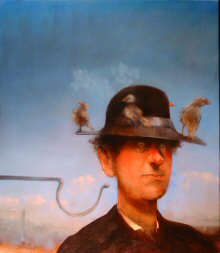 To conclude my research subject at uni this semester we had an interesting look at some creative thinking techniques. We were given these in the context of design for the intent of translating them to ‘research’ methods. I confess that I spent my time daydreaming about how I could apply the techniques to something as simple as a poster design. Specifically a-la-crapola must re-do.
To conclude my research subject at uni this semester we had an interesting look at some creative thinking techniques. We were given these in the context of design for the intent of translating them to ‘research’ methods. I confess that I spent my time daydreaming about how I could apply the techniques to something as simple as a poster design. Specifically a-la-crapola must re-do.
I’ve never been that good at pre-planning design. It’s something I really have to put a lot more effort in to. My work style lends itself toward getting straight onto InDesign (or Illustrator/Photoshop etc.) and playing, while bypassing hand-done sketches and plans. This, as my parents might note, is exactly how I used to approach Maths back in school. Give me the shortcut. I don’t want to do it the long way around unless it is to understand ‘why’ and as soon as I’ve found that out, I’ll go back to using the shortcut – consequently making plenty of silly little mistakes but having a great time getting there.
We covered:
Edward DeBono’s 6 Thinking Hats – I missed the first 15 minutes of the lecture because I missed my train. I’ve heard of the theory before. It’s a novel idea really – I think I might be inclined to be stubborn about my lovely coagulated viewpoint, so in reality no doubt doing something this way would be a great discipline.
Zwicky Box (Also called Morphological Box)- designed by an astrophysicist, it’s crazy tool for finding strange associations between unrelated things. Roughly speaking, it’s a table of headings that aren’t associated and following alternate subheading (also distinct from each other) and a path is chosen through these subheadings using a dice or some other very random method. The output then must reflect these associations. This can also be restricted by limiting the variables.
SCAMPER – An acronym:
Substitute or switch
Combine with something else
Adapt or alter part of it
Modify or distort
Put to some other use
Eliminate a part of it
Rearrange a part of it
These of course can be used in partial, or in full and often their use will present yet another slightly different problem but hopefully a lesser one. I really liked the simplicity of this and the structure that it gives for changing something ever so slightly.
I’m sure there are many more creative thinking stimuli out there, such as Pro-blogger’s: 9 Attitudes of Highly Creative People.
If you find more, specifically ones that you use and are effective, please let me know.
i’ve heard of a couple of those on a creative course at work. a couple more i like are mind mapping and metaphorical attributes, where you list the attritubutes of one object in order to use them to inspire creativity.
like the hats idea too 🙂